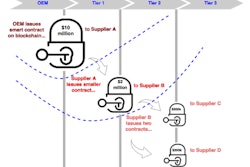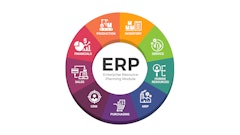
A strategically-designed enterprise resource planning (ERP) system can assist organizations of all sizes by analyzing data from disparate organizational functions and synthesizing in real time, according to a study released by the National Center for Manufacturing Sciences (NCMS).
With the innovative shared web platform, ERP systems can help more organizations realize significant savings in both resources and labor hours.
“Significant work is being done by industry, the government and NCMS to create and improve technological advances,” says Pam Hurt, NCMS VP business capture, communications and partnership. “Making these advances visible and available to a wider audience is the purpose of the NCMS Technology Brief series. Our hope is that collectively, we can build on what has already been accomplished, strengthen the U.S. manufacturing industry and continue to successfully compete globally.”
From the National Center for Manufacturing Sciences (NCMS):
- In 2012, the Department of Defense partnered with MKGCS, LLC to build a prototype ERP known as the Mission Analysis Readiness Resource Synchronization (MARRS) system. The pilot project successfully automated the capture and integration of several data sources and business processes into a shared platform.
- Results from the project show that use of the MARRS system reduces errors and saves time and effort. MARRS automation, when adopted, can result in a significant reduction in man-hours required for data entry, the cost of compiling paper reports and the occurrences of human error.
- Examples of industries that can benefit from a MARRS-type ERP includes healthcare (managing patient information, medical history, scheduling and accounting); construction (sub-contractors, scheduling, accounting, project status and payroll); manufacturing (supply chain, inventory, invoicing, logistics, skilled personnel and equipment maintenance); wholesale (demand and supply metrics, warehouse inventory, product shelf life, sales and purchases) and retail (inventory management, sales report, fashion show scheduling, customer spending and satisfaction data, cash flow).

![Pros To Know 2026 [color]](https://img.sdcexec.com/mindful/acbm/workspaces/default/uploads/2025/08/prostoknow-2026-color.mduFvhpgMk.png?auto=format%2Ccompress&bg=fff&fill-color=fff&fit=fill&h=100&q=70&w=100)







![Pros To Know 2026 [color]](https://img.sdcexec.com/mindful/acbm/workspaces/default/uploads/2025/08/prostoknow-2026-color.mduFvhpgMk.png?ar=16%3A9&auto=format%2Ccompress&bg=fff&fill-color=fff&fit=fill&h=135&q=70&w=240)








